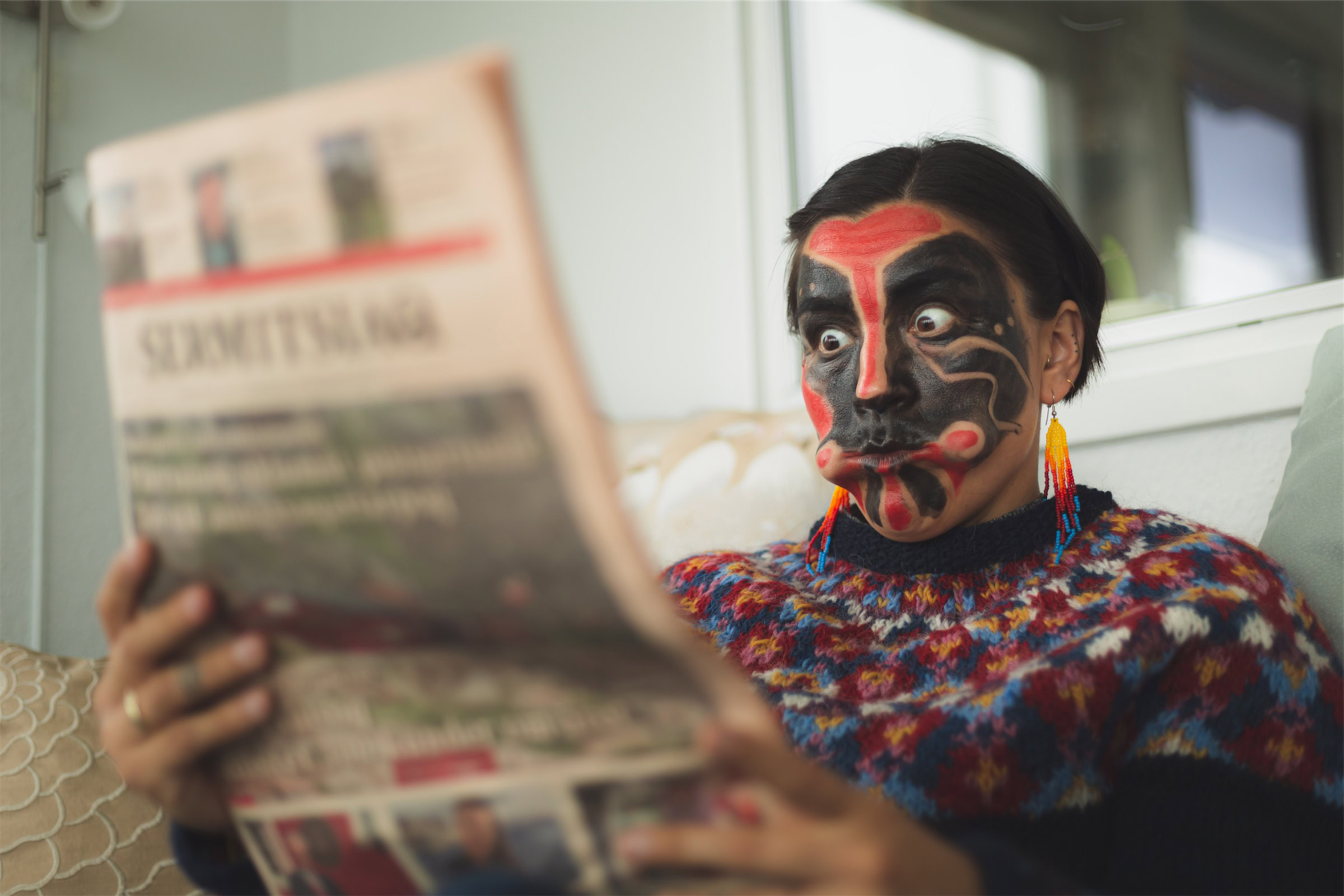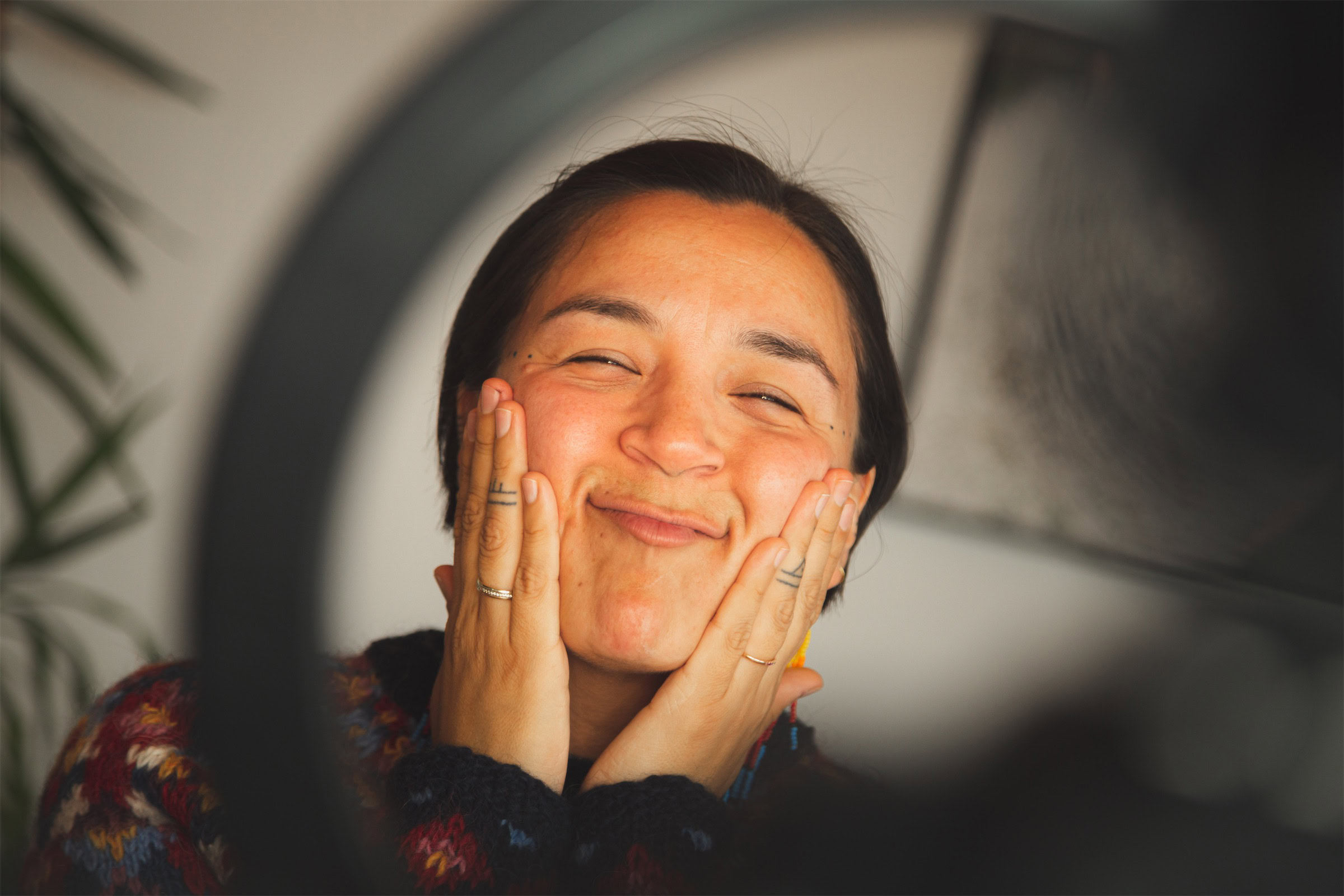The Mask Dance
Photo – Magnus Biilmann Trolle, Visit Nuuk
Imagine…
Imagine a person walking towards you. Their face is covered in black and red face paint, their expression distorted, and they make weird noises. You have no idea what you are looking at or who this person is. Or if this is at all a person. The masked person gets closer to you and is all up in your personal space. You feel uncomfortable but also a little excited. Your heart is pounding. “Please just focus on someone else”, you think. But they don’t. You sit there and seconds feels like hours. Until suddenly the creature moves onward to their next victim in the crowd. You can breathe again, and you realize that you rarely freak out and freeze up like you just did now.
If you have any interest in Inuit culture or the way you react to unexpected (or now after reading this, expected) situations, a Greenlandic mask dance is for you to experience. You might be lucky and only see others stand in the situation just described or you might be extra lucky and get chosen by the mask dancer to feel time slow down and pass you like the slowest snail on a rainy day.
Greenlandic mask – the brief history
The Greenlandic mask dance dates to around 4000 years ago but was during the colonization forbidden to practice which meant it was forgotten. East Greenland was colonized approx. 160 years later than West Greenland, which means many of the traditions were kept alive and thriving.
In the 70’s a group of young Greenlanders at a Tuukkaq Theatre, reinvented the mask dance. This type of mask dance will be the type of dance you see today. So, the Greenlandic mask dance is both very traditional, but also something Greenlanders had to reinvent and reclaim.
Josepha Lauth Thomsen
A mask dancer
A dance takes up to 7 min. It’s a strainous dance and if the audience isn’t responding or giving any energy back, it can be difficult to keep the dance going for those 7 minutes. The more energy the audience gives you the easier it is to go a little longer. Read more about my profile here.









